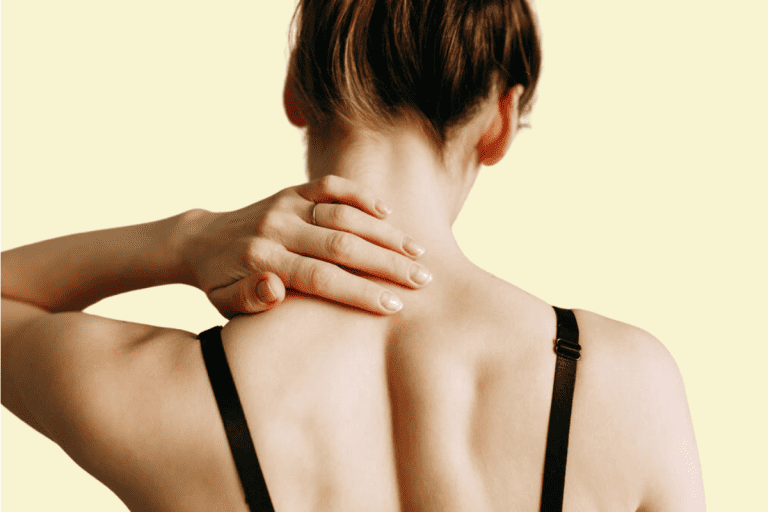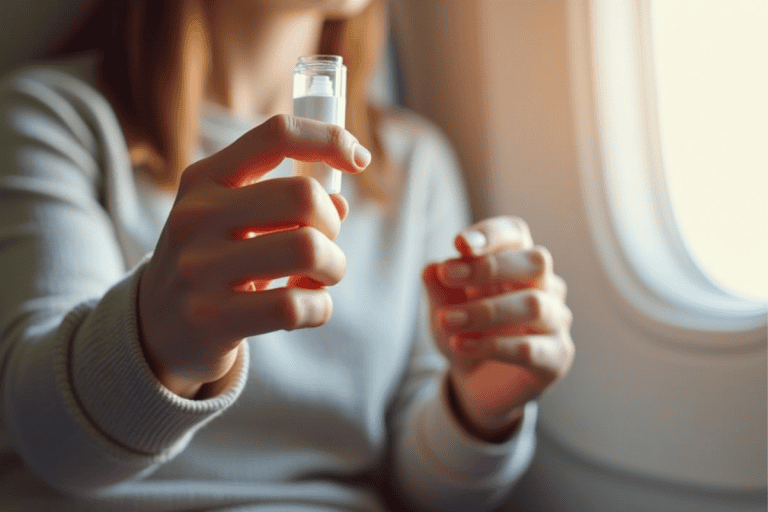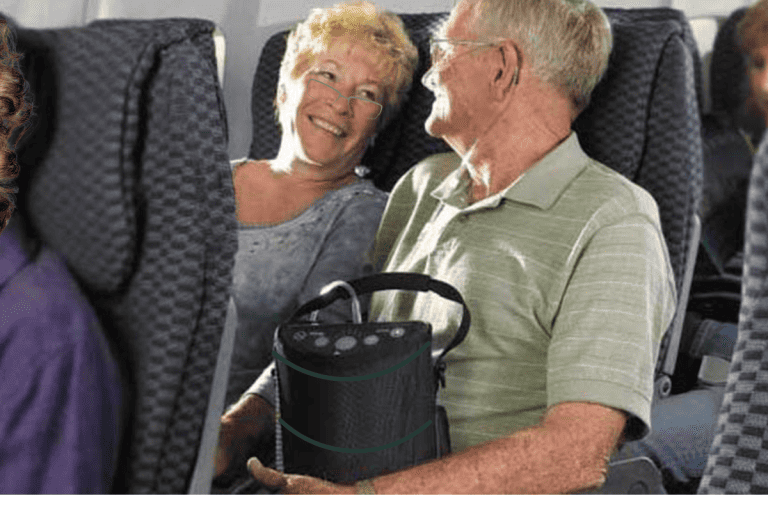Airport Security with a CGM: What Really Happens During Screening

Can you wear your CGM through airport scanners? Should you bring a doctor’s letter? How do you pack your sensors for an overseas flight? Whether it’s your first trip with a CGM or you’re a frequent flyer who just wants to make sure you’re following the latest rules, knowing what to expect can make your journey a lot smoother.
A CGM is an amazing tool for managing your blood sugar on the go. Devices like the Dexcom, Freestyle Libre, or Medtronic Guardian Connect continuously track your glucose levels, often sending the information straight to your phone or receiver.
In this guide, I’ll walk you through exactly what you need to know about flying with your CGM. We’ll cover TSA screening, airline regulations, and customs rules for both domestic and international flights.
If you also wear an insulin pump, be sure to read my Flying with an Insulin Pump article, where I share specific tips for traveling with both devices together. And if you use other medical equipment, you’ll find plenty of helpful advice in my Flying with Medical Devices: The Ultimate Guide, which covers a wide range of devices and travel situations.
At The Keen Insider, we do the legwork so you can travel with medical devices prepared, informed, and worry-free. We monitor the latest TSA guidelines, customs rules, and airline requirements—and confirm with our team of experts in the field to ensure every guide reflects the most current policies.
1. Flying Domestically with a CGM: TSA Rules and What to Expect
TSA officers are trained to handle medical devices like CGMs, and there are steps you can take to make the experience smooth and hassle-free.
1.1 How to Handle TSA Screening
When you approach a TSA checkpoint, you’ll be asked to go through standard security screening. If you are wearing a CGM, it’s important to let the TSA officer know before you go through the scanner.
Most CGMs, including popular brands like Dexcom, Freestyle Libre, and Medtronic Guardian Connect, should not pass through advanced imaging body scanners or full-body scanners. Manufacturers typically recommend avoiding these machines to prevent possible interference with your sensor.

👉As soon as you reach the front of the line, tell the officer:
“I am wearing a Continuous Glucose Monitor and need alternative screening.”
Here’s what usually happens next:
- The officer will explain that you can have a manual pat-down instead of going through the scanner.
- You may be asked to wait briefly while they arrange for a same-gender officer.
- During the pat-down, you can request privacy if you prefer.
- Your hands will likely be swabbed to check for explosives (this is routine).
- You have the right to bring a companion with you during the inspection.
KEEN TIP: Carry a TSA Notification Card and present it along with your ID. It’s not required but can make communication with officers easier. You can print one from the TSA website here:
https://www.tsa.gov/travel/special-procedures
1.2 TSA Cares Program: Extra Support for Travelers with Medical Devices
If you want extra help or are worried about getting through security with your CGM, consider contacting TSA Cares. This free service offers travelers with medical conditions and disabilities personalized assistance during the screening process.
Here’s how TSA Cares works:
- Call 1-855-787-2227 at least 72 hours before your flight to request assistance.
- You’ll be connected with a TSA representative who can answer your questions about security screening with a CGM.
- At many airports, TSA Cares can arrange for an officer to meet you when you arrive and assist you through the screening process.
KEEN TIP: If you are flying from a busy airport or during peak travel times, using TSA Cares can reduce wait times and ensure a smoother process. The extra support can give you peace of mind when you’re navigating security checkpoints.
What About Your CGM Receiver and Supplies?
In addition to the CGM you’re wearing, you’ll probably be carrying extra sensors, transmitters, and possibly a receiver or reader. Knowing how to handle these items at security will help you avoid delays.
Here’s what you should do:
- Keep all CGM devices and supplies in your carry-on bag, not your checked luggage. Checked bags are subject to extreme temperatures and can be delayed or lost.
- As you approach the screening belt, let the TSA officer know you have medical devices and supplies.
- You can request a hand inspection for your CGM receivers and sensors if you prefer they not go through the X-ray scanner. While X-rays generally do not harm these devices, some people feel more comfortable asking for visual inspection.
- Pack your supplies in a clear plastic bag or organizer to keep everything visible and accessible.
- Clearly label your supplies as medical equipment, especially if they are in specialized cases or packaging that might confuse agents.
KEEN TIP: Bring an extra copy of any documentation you have about your CGM, such as a doctor’s letter or device information card. While not required, it can be helpful if TSA agents have questions.
2. Airplane Rules and In-Flight Safety with a CGM
Once you’re past security, it’s time to focus on the flight itself. The good news is that Continuous Glucose Monitors (CGMs) are generally very easy to manage once you’re on board. Still, a little preparation goes a long way when it comes to staying comfortable and making sure your device works as it should during your flight.
2.1 Can You Use a CGM During a Flight?
Yes, you can absolutely use your CGM during a flight. There’s no need to remove your sensor, and there are no airline rules requiring you to shut it off.
Here’s what you should know:
- Your CGM sensor and transmitter stay on your body as usual during takeoff, flight, and landing.
- Most airlines do not require you to switch off Bluetooth for medical devices, including CGMs. However, if you’re using a smartphone to monitor your CGM, you may need to switch your phone to airplane mode—which usually still allows Bluetooth connections.
- If your CGM receiver or app sends out alerts or alarms, it’s helpful to give the flight attendants a heads-up, especially if it’s a long flight.

KEEN TIP: If you’re concerned about alarms sounding mid-flight, set your CGM thresholds to minimize unnecessary alerts before boarding. Just remember to reset them to your normal settings once you land.
2.2 Keeping Your CGM Safe During the Flight
While CGMs are designed to handle normal daily activities, flying does introduce a few environmental factors to keep in mind.
Here’s how to keep everything working smoothly:
- Cabin pressure changes generally won’t affect your CGM, but on rare occasions, some users report temporary sensor errors. If this happens, stay calm—readings usually return to normal once the cabin stabilizes.
- Temperature control in the cabin is usually fine for CGMs and supplies, but avoid placing spare sensors or your receiver in the overhead bin, where temperatures can fluctuate more dramatically.
- Keep your receiver or smartphone in your personal item under the seat in front of you for easy access during the flight.
- On long-haul flights, adhesives can sometimes loosen. Consider using adhesive patches or overlays to secure your CGM sensor before you board.
KEEN TIP: Bring a few alcohol wipes in your carry-on to clean your skin if you need to reapply adhesive patches during a layover or long flight.
2.3 Power and Charging Your CGM Receiver In-Flight
Most CGMs rely on a receiver, smartphone, or smartwatch to display data. While your sensor may last for days or weeks, the devices that collect and display the information might need charging—especially on longer trips.
Here’s how to manage power during your flight:
- Many airplanes now offer USB ports in-seat. Check ahead of time by reviewing your airline’s seat map or amenities page.
- If no outlet is available, bring a portable charger (power bank) in your carry-on. Keep in mind that power banks must be packed in carry-on luggage, not checked bags, due to airline regulations.
- Fully charge your receiver or smartphone before leaving home or your hotel.
- If you’re using a smartphone and worried about battery life, close unnecessary apps and reduce screen brightness to conserve power.
KEEN TIP: Choose a portable charger that’s TSA-approved (generally under 100 watt-hours). Some airlines allow up to two power banks per person, but it’s always a good idea to double-check the rules of your specific carrier. Be sure to read our complete guide to flying with a power bank for helpful information.
3. Going Through Customs with a CGM: What International Travelers Should Know
If you’re traveling internationally with your Continuous Glucose Monitor (CGM), you’ll have one more step after you land: Getting through customs. While personal medical devices like CGMs are usually allowed without any trouble, customs rules can vary from country to country. It helps to be prepared so you don’t get slowed down or caught off guard.
Some countries ask travelers to declare medical devices, while others don’t. Some security agents might not recognize your CGM and ask additional questions. Being organized, informed, and calm can make the difference between a smooth arrival and a frustrating delay.
3.1 Declaring Your CGM and Supplies at Customs
When you enter another country, you’ll typically need to go through customs—either by filling out a form on the plane or speaking directly with an agent at the airport.

Here’s what to expect:
- Most countries allow personal medical devices like CGMs for personal use without issue.
- If you are carrying extra sensors, transmitters, or applicators, be ready to explain that they’re for your medical needs.
- Some countries require travelers to declare electronic devices or medical equipment, especially if you’re carrying large amounts of supplies.
You may be asked:
- What is this device?
- Why are you carrying multiple components?
- How long are you staying? (This helps them understand why you have extra supplies.)
KEEN TIP: Carry a doctor’s letter that explains you use a CGM. The letter doesn’t have to be complicated—just your name, the name of the device, and that it’s medically necessary. Check out our Free downloadable medical travel letter template to bring to your doctor. Some travelers find it helpful to have a second copy translated into the language of their destination.
3.2 Airport Security Differences Abroad
While TSA agents in the U.S. are typically familiar with CGMs, airport security teams in other countries may not be. Security screening procedures can vary widely.
Here are some things to keep in mind:
- Body scanners and metal detectors differ by country. Some airports use full-body scanners similar to TSA’s, while others rely more on pat-downs and metal detectors.
- If you’re not comfortable with a scanner, request a manual pat-down instead. It’s a good idea to make this request as soon as you reach the checkpoint.
- Be prepared to explain your CGM more than once. If security officers aren’t familiar with it, they might ask for additional inspections.
KEEN TIP: Learn how to say “medical device” or “diabetes monitor” in the local language. It can help clear up confusion during security checks.
3.3 Language Barriers and Documentation
One of the challenges of international travel is the possibility of a language barrier. Not every customs officer or security agent will speak English, and explaining your CGM can be tricky. Ask for a supervisor.
Here are additional ways to make it easier:
- Bring translated documentation explaining what your CGM is and why you’re carrying extra parts. Even a simple translation can make a big difference.
- Have a copy of your prescription or doctor’s letter easily accessible. Printed copies are often more useful than digital ones in these situations.
- Consider using a translation app on your phone to explain your device if needed.
KEEN TIP: Keep all of your paperwork—doctor’s letters, prescriptions, translated documents—in a single pouch or folder in your carry-on. You don’t want to be fumbling for papers when you’re standing at customs.
4. How to Pack Your CGM for Air Travel (Domestic & International)
Packing your Continuous Glucose Monitor (CGM) and its supplies for air travel takes a little extra planning—but once you’ve done it a couple of times, it becomes second nature. Whether you’re flying across the country or around the world, packing smart will help avoid headaches at security, during the flight, and after you land.
4.1 Carry-On vs. Checked Luggage
The most important rule when packing a CGM for air travel is this: Always keep your CGM devices and supplies in your carry-on bag.
Here’s why:
- Checked luggage is often subjected to extreme temperatures in cargo holds, which can damage your sensors and transmitters.
- There’s always the risk that your checked bag could be delayed or lost. You don’t want to arrive at your destination without your CGM supplies.
- If customs or security needs to inspect your medical equipment, it’s much easier to manage when it’s with you.
What goes in your carry-on:
- CGM receiver or smartphone (whatever you use to monitor your readings)
- Extra sensors and transmitters
- Applicators
- Adhesive patches or overlays
- Chargers, batteries, and cables
- Doctor’s letters or medical documentation
- Portable charger (if you use one)
KEEN TIP: Use a dedicated pouch or organizer for your CGM supplies inside your carry-on. It keeps everything together and makes it easy to pull out if requested by TSA or customs.
4.2 Packing Tips for a Smooth Security and Customs Experience
Organizing your supplies in advance makes things much easier at security checkpoints and customs stations. Here are some helpful packing strategies:
- Label your supplies clearly as “Personal Medical Equipment.”
- Place smaller components (like sensors and applicators) in clear, resealable bags. This makes visual inspections faster and avoids confusion.
- Keep your documentation (doctor’s letter, translated copies, prescriptions) in an easy-to-reach spot, like a folder or pouch at the top of your bag.
- Pack extra sensors and adhesives, even if you don’t think you’ll need them. Travel plans change, and you might be away longer than expected.

KEEN TIP: If you’re flying internationally, check the customs regulations for each country you’re visiting. Some countries have limits on the amount of medical supplies you can bring in without prior approval.
4.3 Protecting Your CGM Equipment During Travel
Air travel can be tough on luggage. Bumps, drops, and shifting bags are common, so you’ll want to take a few extra steps to protect your equipment.
- Use a hard-sided case or padded pouch for your receiver or smartphone. These are more likely to get banged around in your bag, especially during boarding or turbulence.
- Don’t store your CGM supplies in the overhead bin unless you have no choice. The temperature and pressure changes can be more extreme than under the seat.
- If you need to pass your equipment through an X-ray scanner, it’s generally fine for the receiver and supplies, but you can request a hand inspection if you’re concerned.
KEEN TIP: Bring a backup power bank and cables for your receiver or phone. Be sure your power bank meets airline guidelines (usually under 100 watt-hours), and remember—it must go in your carry-on, not checked luggage.
5. Frequently Asked Questions (FAQs)
5.1 Can I wear my CGM through TSA security scanners?
You can wear your CGM through metal detectors, but it’s best to avoid full-body scanners (Advanced Imaging Technology) and backscatter X-ray machines, as recommended by most CGM manufacturers. Let the TSA officer know you’re wearing a CGM and request a manual pat-down instead.
5.2 Do I need a doctor’s letter for my CGM when flying?
While not required by TSA, carrying a doctor’s letter explaining your use of a CGM can be very helpful, especially when traveling internationally. It can speed up the process at customs and answer questions about your medical equipment.
5.3 Can airport scanners damage my CGM?
Full-body scanners and certain types of X-ray machines can potentially interfere with your CGM’s sensor or transmitter. To be safe, ask for alternative screening, such as a pat-down and visual inspection of your devices and supplies.
5.4 Should I inform the airline about my CGM in advance?
You do not need to inform the airline about your CGM ahead of time. However, it’s a good idea to let the flight attendants know if you think your CGM might trigger alarms during the flight. They’ll appreciate the heads-up and be more understanding if something comes up.
5.5 Can I charge my CGM receiver or smartphone on the plane?
Most airlines offer USB ports or power outlets in-seat, but it varies by plane. Bring a fully charged power bank in your carry-on as backup. Remember that power banks must be under 100 watt-hours and are only allowed in carry-on luggage.
5.6 What if my CGM sensor comes off during the flight?
Carry extra adhesive patches or overlays in your bag to reinforce your sensor if it starts to loosen. If it does come off completely, you’ll be glad you packed extra sensors and applicators in your carry-on for quick replacement.
5.7 Do I need to declare my CGM at customs?
In most countries, you won’t need to declare a CGM for personal medical use, but it’s smart to be prepared. If you’re carrying a large number of sensors or supplies, have a doctor’s letter and translated documents to explain your situation, just in case customs asks.
6. Wrap Up
Flying with a Continuous Glucose Monitor (CGM) doesn’t have to be complicated. Once you know what to expect at TSA security, how to handle airline rules during the flight, and how to navigate customs when traveling internationally, you’ll feel a lot more confident heading into your trip.
A little preparation goes a long way. Keep your CGM supplies organized, your paperwork handy, and advocate for yourself if something comes up during security or customs. Whether you’re flying domestically or internationally, these steps will help make your travel experience smoother—and hopefully a little less stressful.
And if you’re traveling with other medical devices or also wear an insulin pump, don’t forget to check out the helpful resources mentioned earlier. You’ll find step-by-step advice to make managing everything while flying even easier.
Safe travels—and enjoy your trip!






